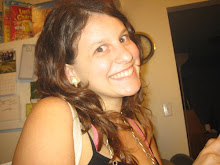
There are three current non-white Disney Princesses…
The first non-white animated Disney princess was Jasmine from Aladdin in 1992. In the opening song Arabian Nights, Robin Williams (in a thick Arabic accent) sings a song about the movie’s specific and Arabic lifestyle. He originally sang: ‘Where they cut off your ear if they don’t like your face/it’s barbaric, but hey, it’s home.” to ‘Where it’s flat and immense and the heat is intense/it’s barbaric, but hey, it’s home’. (The version I own actually says the second phrasing). Entertainment Weekly ranked Aladdin as being one of the most controversial films in history because of those lyrics. Another complaint/issue was that the likeable Arabic characters where light skinned and had more Caucasian features, while the unlikable/villain characters had Arabic accents and darker skin.
The second diverse Disney princess was Pocahontas, from the movie with the same name that came out in 1995. The film’s premiere still holds the record of the largest movie premiere ever. It was criticized for the inaccuracy of different ethnic groups in the film and for historical inaccuracies too. Many people thought that the character design of Pocahontas did not make her look Native American but made her look ‘fashionably exotic’. The film also distorts the true and noble history behind Pocahontas. She revered John Smith as a father, being only 10-12 years old when meeting him, her marriage to Kocoum and John Rolfe later, her kidnapping by the English, and conversion to Christianity. Pocahontas’ romantic relationship with John Smith was written into the script to keep with Disney’s theme of the lead characters ending up together (although movies like The Black Cauldron, Fantasia, Alice, and the Sword and the Stone didn’t need romantic energy to make the plotlines interesting)…
The last diverse Disney princess to be animated was Mulan in 1998. This animated film had many feminist critiques about the film making fun of repressive gender roles. Mulan’s only perceivable goal as a female is to be a good daughter to her father and then be a good wife to her husband. There are many instances where a woman’s place is nailed down. However, Mulan defies all of those in the end to find her ‘happily ever after’ happiness. But, she had to dress like a man to get it. What exactly does that say? Kudos to this though: Mulan’s character is, so far, the strongest and most independent of all the Disney princesses without being overly glamorous and stereotypically beautiful.
Out of the three princesses mentioned above, only Jasmine and Mulan seem have ‘Disney Princess’ marketing. Pocahontas is largely left out. (Even Jasmine and Mulan are left out in a lot of the merchandise as well… one great example is the Disney Princess cereal… only white princesses I guess.) Also, the dress-up clothes for Mulan are the clothes she is uncomfortable in, since she doesn’t know her true identity. She was herself when in her armor. Now, I know that in today’s society it’s very hard to market things that can be as gender-ambiguous/ redefining as giving a little girl armor to wear. Little girls are told that they should wear dresses and want to be glamorous. They market Mulan’s feminine attire, but perhaps they should sell sets of the armor and Mulan’s dress, so that girls can play the two different personas of Mulan’s character identity in the film.

1 comment:
Hi! Thank you so much for your comment on my Disney article-- that was so nice of you! I think that it's absolutely amazing that you're a Feminist Animator because I know that there aren't too many who'd consider themselves feminists, better yet emphasize female empowerment through their work. I just read a couple of your posts on Disney and I really enjoyed them-- isn't it crazy to think that so much of what children tune into revolves around this type of media? It's pretty sad. And it's so funny you left me that comment because I just did a Media Content Analysis for a class; I surveyed and interviewed a group of 8 and 9-year old girls on their perceptions of Disney princesses and how those perceptions affect their ideas on marriage, gender roles, true love, and happiness. The results were pretty heartbreaking; when asked what they want to be when they grow up, one of the girls said a cleaning lady because she wants to clean up after her husband's things. Another said that if she could change anything about herself to be like the princesses it would be her life "because it is sad." All of the girls came from a Hispanic background, so they also commented on how their skin color differed from the "beautiful" princesses. I filmed some of their responses, and I'd like to put my footage online, but I didn't get any media waivers from the kids' parents and I wouldn't want to cause any trouble.
When you profiled Jasmine, Pocahontas, and Mulan, I kept reflecting on my project because hardly any of the girls liked those princesses. I asked them why and some said that Mulan was ugly when she cut her hair because she looked like a boy. Others had nothing to say about Pocahontas because they just weren't interested. That's why after finishing the project, I proposed the idea of creating a small activity/lesson plan for younger kids in a classroom setting with their teachers to watch clips of Disney movies and analize them together. I don't know how I'd go about starting that, but I really think it would help. What do you think?
Anyways, sorry to leave such a long comment but I was so excited to receive your feedback on mine, I had to let you know how much I appreciated it. I'd also love to see some of your work-- is any of it online? Go ahead and let me know and I'm sure I'll talk to you soon!
Post a Comment